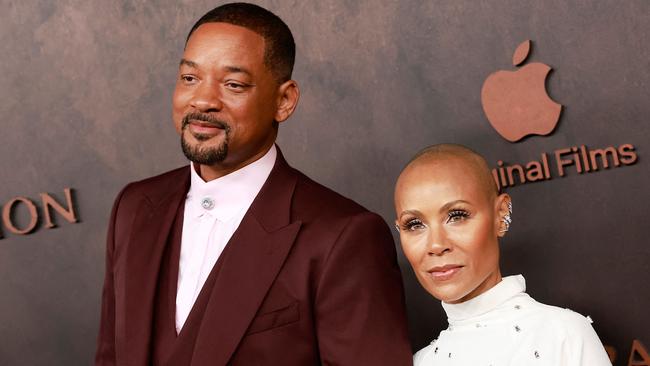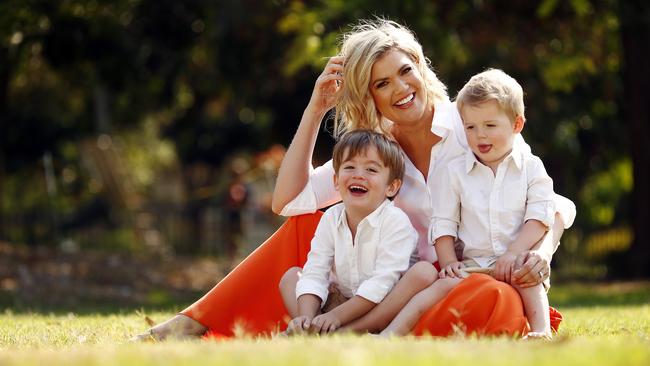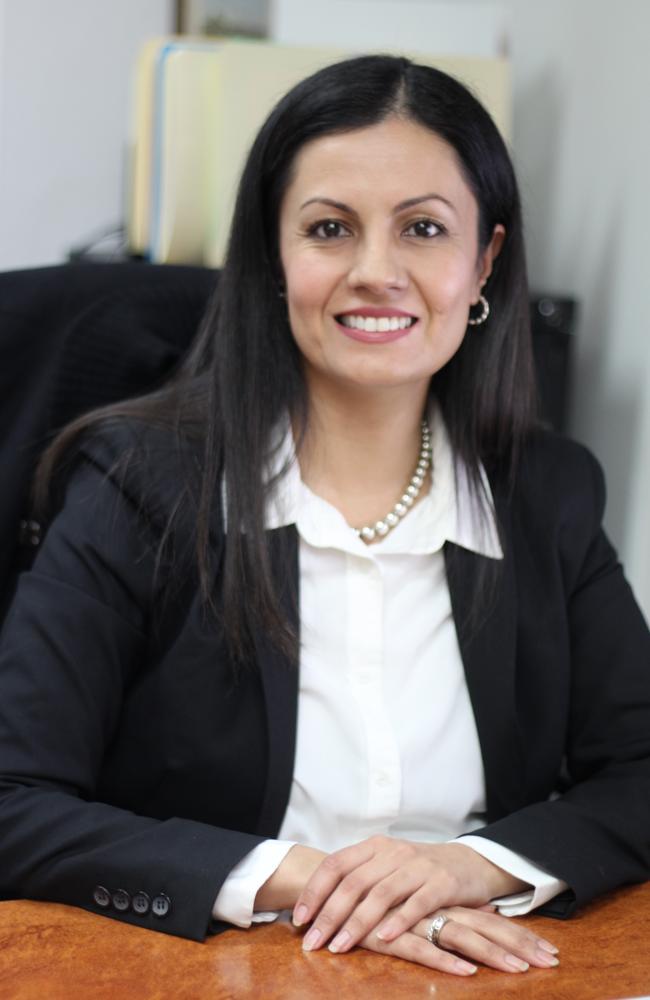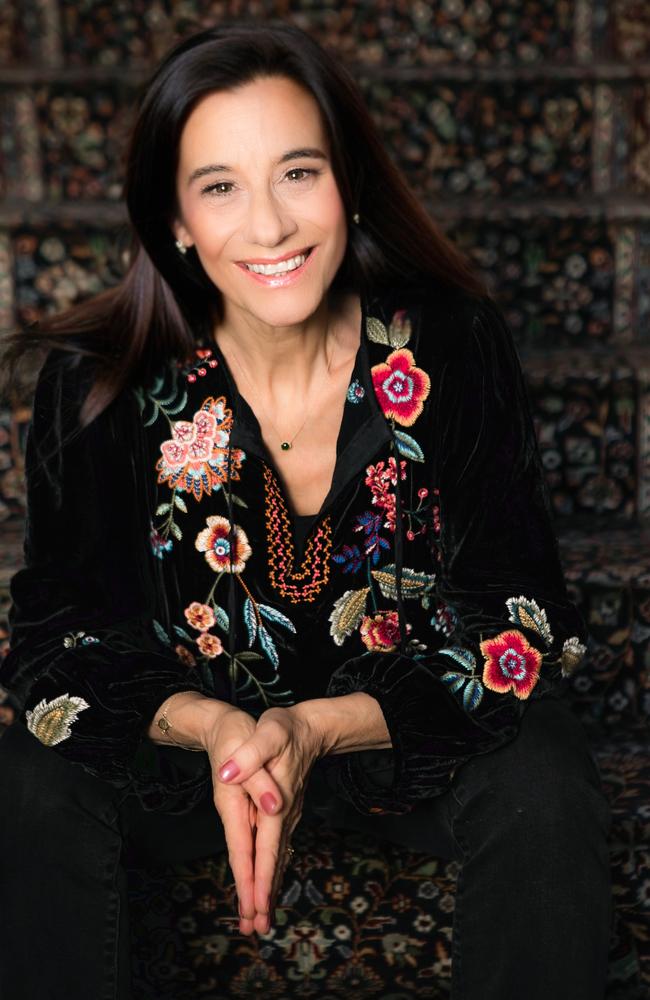‘People don’t need to feel ashamed’: The field of experts helping couples have a ‘good’ divorce
With one in three marriages ending in divorce, a new field of experts is helping separated couples to achieve the impossible.
News
Don't miss out on the headlines from News. Followed categories will be added to My News.
Driving, plenty say, is the best place to have a tricky conversation but for us it was the worst. Recently separated, my husband and I were returning from a school concert and discussing how a forthcoming family occasion was going to be managed. We had opposing views and as we both tried to prosecute our case, the conversation became increasingly angry and accusatory.
I can’t recall what was said but there was such venom in our words I remember wondering what it would take for voices to crack a windscreen. When we pulled up outside our family home my husband jumped out and stormed down the street back to his rented flat. Furious, I stomped after him, blood boiling. And that’s when I remembered our two daughters, aged 13 and 10, were still in the back of the car.
Most separations have their low point, a moment where pain, fear, frustration or sadness is so intense, so sense-stealing that you’re left wondering who you are. That evening was my turning point. I had loved this man enough to make a life with him, to have two children with him. I needed to honour what we were, who we continued to be and what we might become.

Next month marks 10 years since we separated, just a few weeks after Gwyneth Paltrow and Chris Martin announced their marriage was over with a statement that they were “consciously uncoupling”. Despite their sadness, they were emphatic: “We are, however, and will always be a family.”
While some scorned conscious uncoupling as Californian therapy speak and Twitter sent the hashtag viral with its trademark cynicism, I embraced the sentiment.
Was it possible to divorce well? To retain respect and kindness through the unhappiest of times? To put the wellbeing of our children above our own hurting hearts? A decade later, a good divorce is no longer a wistful fantasy or a contrived delusion but an achievable goal.
As lives grow longer and more marriages falter, the concept of conscious uncoupling has moved from the fringes to the mainstream. As couples transition from “partners” to “parents” more and more are opting for a more respectful, collaborative and less expensive path to divorce.
If celebrities are the most visible exponents of the desire for an amicable rather than adversarial split, the real work and delicate manoeuvring is being done in the suburbs where the pandemic decimated once tolerable unions and the cost-of-living crisis has made asset splits and dual homes more challenging.

In September, Hugh Jackman and Deborra-Lee Furness announced their separation after 27 years with a statement celebrating their “wonderful, loving marriage” but declaring their need “to separate to pursue our individual growth”. They would undertake this next chapter “with gratitude, love and kindness”.
Representative of the growing trend for “grey divorce”, Meryl Streep and her husband Don Gummer recently revealed they had ended their 45-year marriage six years ago. “While they will always care for each other, they have chosen lives apart,” said a spokesperson.
Will Smith and Jada Pinkett Smith also confirmed they’ve been separated for six years but have no plans to divorce. “We’ve just got deep love for each other,” Pinkett Smith said, “and we are going to figure out what that looks like for us.”

This reinterpretation of the old model of divorce is driven by multiple factors, among them commonsense, a greater awareness of the impact of conflict on children, lifestyle and financial practicalities, and a repositioning of separation less as failure and more as a life event to be navigated. As a result, couples are not just splitting more amicably, they’re embracing strategies that work for them.
The Project host Sarah Harris recently revealed that three years after separating from her husband Tom Ward, the pair took their two young sons on holiday to Fiji together in July. While they had separate hotel rooms, she pointed out that it was good for the boys to see their parents were still “wonderful friends” who wanted the best for them.

As she says: “It’s a really nice place to be in, being part of a family that looks a little bit different these days but there’s still a lot of love there.”
Likewise, singer and actor Natalie Bassingthwaighte says that despite being in a new relationship with a woman she believes her marriage to husband Cam McGlinchey was a success and that they still admired and respected each other.
“It was very beautiful. We’ve done amazing things together, achieved a lot and have two incredible children.”
With new practices comes a new vocabulary. “Soft separation” refers to separated couples who by choice or necessity need to cohabit, while “nesting” involves the children remaining in the family home and the parents moving in and out depending on whose turn it is to be the primary carer.

During my research I spoke to one woman who referred to her “wusband”. It refers to “was husband”, an infinitely gentler term than the more loaded “ex”.
When I separated back in 2014, my husband and I continued to share the mortgage and his rent and, though costly, it gave our daughters time to adapt. He would move back into our home when I was away for work and though we knew no one doing likewise, now it’s a well-known method for providing children with stability through a break-up.
Emily Parker, 44, and her husband Ryan, 43, embraced “nesting” when they separated a year ago. The pair share three daughters, Lucy, nine, Rose, 11, and Alice, 13, and rotate in and out of the family home in Victoria on a weekly basis.
Whoever is not with the girls stays in a two-bedroom unit they’ve rented 900m away and the couple has just extended the lease for another year.
As Emily explains, Ryan starts work early so she goes to the house every morning when he leaves to get the kids ready for school. As she works later he is there every evening to get them to their after-school activities.

Whoever is staying with the children cooks dinner and the family has a weekly family dinner on their swap-over night. Ryan had read about “nesting” and when he pointed it out, Emily, who works as a research manager, investigated the pros and cons.
“I think this is the best possible way we could have done it because both of us see the kids most days still,” Emily says. “This may not last forever but particularly at this early stage when we’re still sorting things out, giving them that security and showing that we’re both here and not going anywhere works for us,” she says.
With the girls all playing footy, Emily says it’s important they can both stand on the sideline together without animosity and in years to come she envisages being able to join in celebrating important moments in their lives.
As she points out, they may one day be grandparents together. For now, their arrangement, though expensive, also softens that awful sense of rupture and displacement that can characterise divorce.
As she says: “The hardest part of separation is missing the kids when we’re not with them. I don’t think either of us would cope if we didn’t see them for a week.”
Communication is paramount and even though she says neither is volatile, they did their early planning via email, both to clearly formulate their own thoughts and allow the other to process them.
“We’re both respectful of each other as parents and we would never use the kids as pawns against each other,” she says.
“We’re both really capable of doing what’s best for them.”
While the pair have individual and shared bank accounts, they also have clear boundaries. If one parent wants to swap nights, it’s not conditional on the other knowing what they are doing. Likewise, if either re-partners, while they don’t require approval from the other, they would discuss it rather than potentially hearing about it from their children.
When the Parkers decided to split they turned to The Separation Guide, an online hub of guidance and support which employs a three-minute questionnaire to assess couples’ level of amicability and tailor a pathway for their separation. Checklists help inform them about financial and parenting options while the site –which has seen record high inquiries in 2024 –also connects them with specialists who support the organisation’s goal of de-escalating tension and ensuring the process is affordable.

Wajiha Ahmed is part of The Separation Guide network and as a family lawyer and qualified mediator she has a 360-degree view of divorce from the bitter to the amicable. When couples bring their anger and recriminations to her she is blunt.
“The one thing I chat to parties about, especially if I’m working as a lawyer, is that the opportunity cost and the time cost that’s involved in an adversarial process means it’s only going to benefit one person – that’s me.”
It was going through a “horrific” divorce of her own in 2006 that led Ahmed to train as a mediator and, later, divert from commercial to family law.
“It was very expensive, very long and it definitely took a toll on me from a mental health perspective,” she says. “I didn’t want anyone else to go through it if I could help it. I realised, this is awful and there had to be a better way to do this.”
Ahmed began as a mediator with Legal Aid and says her continuing work with the organisation as well as her master’s degree focused on cross-cultural dispute resolution has given her insight into how to help clients from differing socio-economic, cultural and linguistic backgrounds. “There is no one-size-fits-all in the mediation space but there is this really lovely toolbox that we get to use of things that work and don’t work which you hone over years in order to help parties reach agreement and where they are in control of the outcome.”

So from where Ahmed sits, what actually makes a good divorce particularly when the emotions which characterise the end of a relationship such as grief, anger and resentment seem counterintuitive to harmony?
She nominates several elements that can aid a calmer split: a slower approach, a genuine commitment to transitioning from partners to co-parents when children are involved, and a recognition that if you’ve been in a relationship with another person they must mean something to you. “You need respect, both for yourself and the other person,” she says.
“It’s also about having a lot of integrity, being truthful and not hiding information from the other party and wanting to compromise so you’re able to come up with an agreement that’s going to be ultimately beneficial to you both.”
While divorce, as the second most stressful life event after death, often brings out the worst in human behaviour, Ahmed has seen some of the best.
She recalls a couple where one partner had an autism spectrum disorder and the other took care in ensuring there were sufficient breaks for the partner to process information. She noted that they travelled to and from mediation together.
She was also astonished to discover another divorcing couple both had large and identical superannuation balances. The wife had taken time out from work to raise their four children but they had income split the husband’s salary to ensure both were looked after when it came to their retirement.
There are also amusing moments, notably a couple discussing custody of their cat. When they revealed that Priscilla had, in fact, died, Ahmed couldn’t understand the problem. It turns out the cat had been stuffed.
While the number of divorces in Australia has trended downward since the 1990s, figures spiked in 2021 with 56,244 marriages ending in divorce, according to the Australian Institute of Family Studies which says the recent increase may reflect administrative changes.
While de facto relationships are not captured in the statistics, close to 50 per cent of marriages falter with a greater number of those aged over 45 separating.
Other key divorce trends, according to new research from The Separation Guide, is that the cost of living is making separation impossible for many while the societal cost – the impact of divorce on workplaces due to missed workdays, higher stress and decreased productivity – is estimated at more than $800,000 a couple.
While do-it-yourself divorces are becoming more popular, with 33 per cent of couples reporting they had settled without guidance, the organisation says only seven per cent of those using their triaging Q&A were suitably informed to use a DIY approach.
As the report states, “More than 42 per cent of those with primary caregiver responsibilities had reached a 50-50 split of assets without seeking any advice about the unfairness of the arrangement.” This is contributing to women being at greater risk of financial disadvantage.
Yet despite nearly a decade of awareness around “conscious uncoupling” and more resources available to aid a good divorce, The Separation Guide reports a notable rise in acrimonious separations with only 49 per cent of those separating in 2022 saying their split was amicable compared to 70 per cent in 2020.
A rise in awareness around domestic violence and financial entitlement is driving the change which has an emotional as well as a financial impact.
The Guide reports that an acrimonious divorce costs on average $63,945 compared with the $21,088 average for all divorces. By using education and a de-escalation, 87.5 per cent of those surveyed said they’d managed to resolve for less than $10,000.

Katherine Woodward Thomas, the family therapist who coined the term “conscious uncoupling” back in 2009, told me the fact we anticipate rancour, hostility and bitterness indicates that while most aspire to an amicable breakup, in reality we tend to collapse into blame and overwhelming emotions.
Yet divorce, she argues, is as much a beginning as an ending. “I really created it (conscious uncoupling) for the person who was suffering with a broken heart and a shattered life and was wrestling with overwhelming emotions like rage or a desire for revenge or this deep heartsickness.”
She says her five-step program takes people through post-traumatic stress to post-traumatic growth.
“We become conscious of ourselves and who we are going to be in the face of this devastating experience.” She also believes our values are still aligned to an era when the average lifespan was less than 40 and the expectation was that you would marry for life.
“There’s this belief that if a marriage ends before one or both parties die then that marriage is a failure (yet) it’s inauthentic to the lives that we’re living,” she explains.
“If serial monogamy is the new normal, and statistically it is, we have to learn to do this better. We have to learn not to do damage from those primitive parts of ourselves, to protect our children, to protect our own hearts and to protect our future in love. And to use the breakup in a way that’s going to help us love better on the other side.”

When it comes to children, Woodward Thomas, who runs conscious uncoupling workshops, says the worst thing is when we leave them feeling “emotionally homeless”.
“The relationship between two parents is actually a home for that child,” she says, noting that when resentment or hurt festers, children feel they need to take sides. If they feel they’re abandoning one parent to visit the other they’re always in a state of loss.
“A lot of studies have shown that it wasn’t so much divorce that damaged children but unresolved conflict where children are raised in homes where there’s a lot of animosity between the parents, even if the family is intact,” she says.
Unlike death or illness, divorce is often hidden pain and yet when we hear others’ stories we learn how to do it better.
Women tend to speak more openly so I asked a couple of men to reflect on their experiences.
Andrew*, 39, from West Australia, says he grieved the end of his marriage with the mother of his two children like a death but realised that raging against the unfairness of it only compounded his suffering. So he started a gratitude journal, noting tiny moments of joy.
“It’s important to recognise what things will help you (exercise, talking to trusted friends and family, counselling) and avoiding the things that exacerbate your pain (drinking, ranting about your ex and re-partnering too quickly),” he says.
Mark*, 57, from Brisbane, says when he divorced from his wife more than 20 years ago, he’d been travelling constantly and hadn’t properly understood the extent to which his wife was disenchanted with the marriage. As they shared caring for their young daughter, he says it took him a while to process the end of the relationship.
Years later, they’re divorced but work together in a shared business. Their daughter, now 22, is studying overseas. “It all comes down to the vision of what you want out of it. Why would I choose to make a complete and utter enemy out of the mother of my child?”

Adelaide lawyer Rose Cocchiaro set up her firm Resolve eight years ago to help clients shift to a more collaborative approach after becoming dismayed by the traditional legal model of positional-based bargaining. “I no longer wanted to be part of the tragedy,” she says, explaining how when working for a previous firm one client lost all her money paying legal fees, another had to abandon the fight to see his child because of prolonged litigation and how a third took his own life after a court ruled he couldn’t see his children.
While 20 per cent of the divorces she handles go to court, the rest are negotiated by a team focused not only on the legal rights and entitlements but the family’s goals.
As she explains: “We ask ourselves how can we support these children to thrive, what do both parents need to feel empowered and how are we going to achieve the goals with this asset pool?”
At her offices, parties negotiate in a room furnished with couches, art, rugs and scented candles and there are cakes and drinks on the table.
“I wanted the ambience of a day spa,” says Cocchiaro who is also a certified divorce coach.
“Divorce does not need to be a negative thing, people don’t need to feel ashamed of it. It’s happening more and more and if they do it well, it will have a knock-on effect on the community and generations to come.”
Conflict, she says, is not avoided but controlled while her Italian heritage underpins her belief that it’s possible to have “honest, kind-hearted loving homes” even when families separate. Woodward Thomas agrees: “We can’t protect children from disappointment, but we can navigate wisdom. Children need to belong somewhere so it’s very important not to break the container of a family. You say, ‘We are still a family, we’re just going to change the living arrangements.’”
It’s a sentiment I reflect on as I sit at dinner with my former husband and our two daughters as we celebrate the youngest’s birthday. We talk about her birth, as only we can, and laugh about her childhood obsession with fairies, as only we know.
When we separated, I didn’t want to be known as a “broken family”. Now, I continue to see us as a different shape of whole.
* Names changed for privacy
More Coverage
Originally published as ‘People don’t need to feel ashamed’: The field of experts helping couples have a ‘good’ divorce





